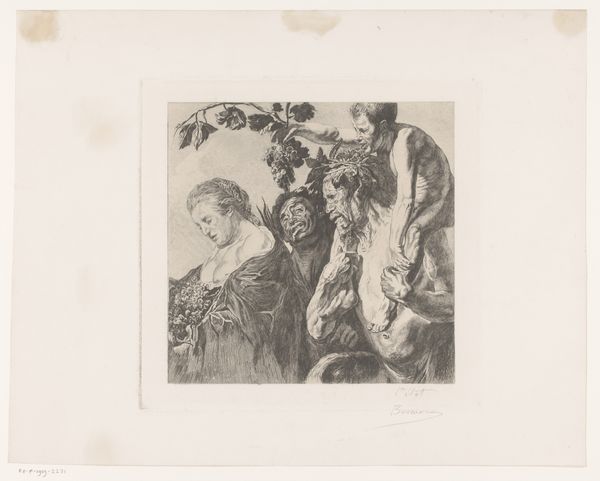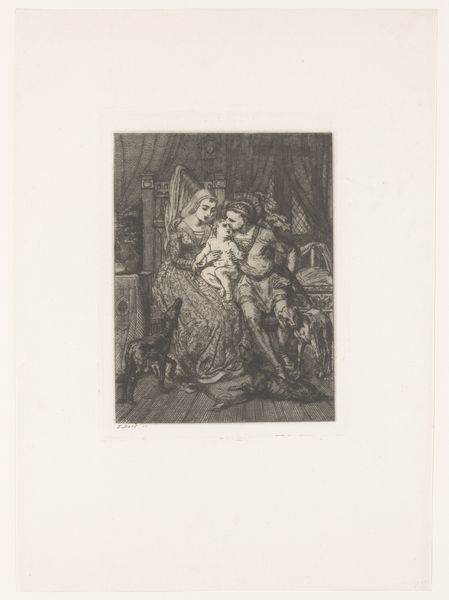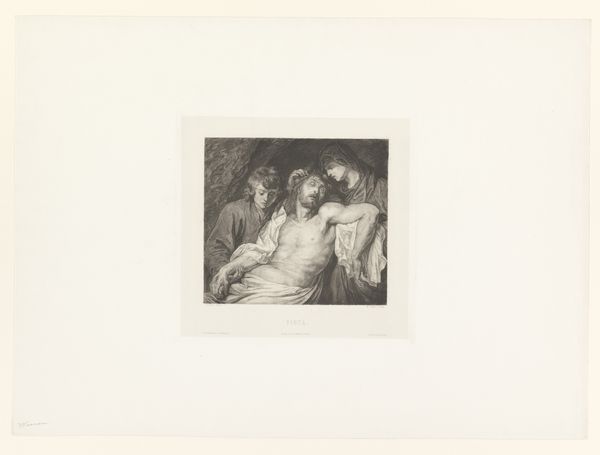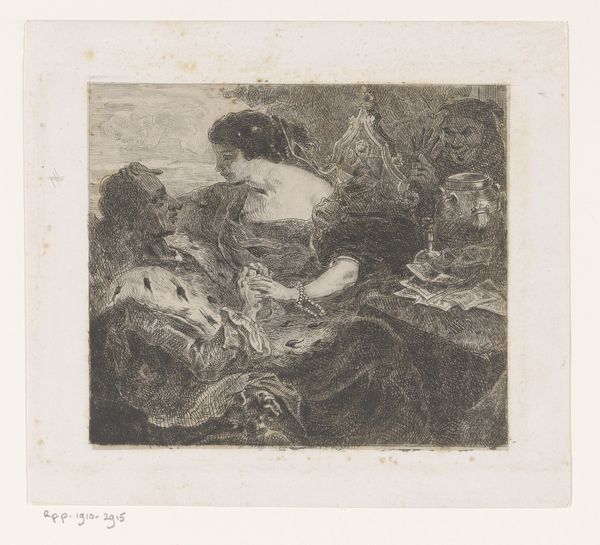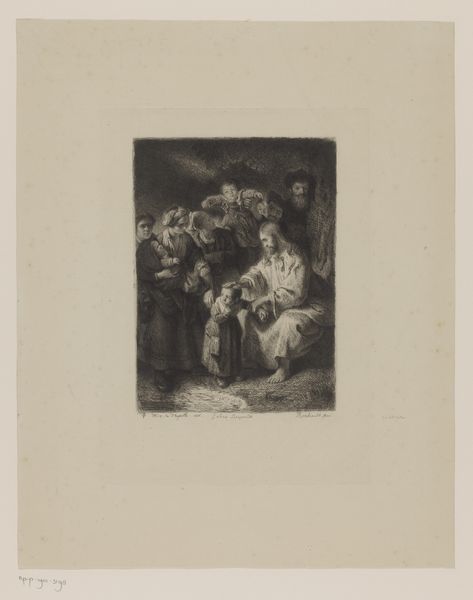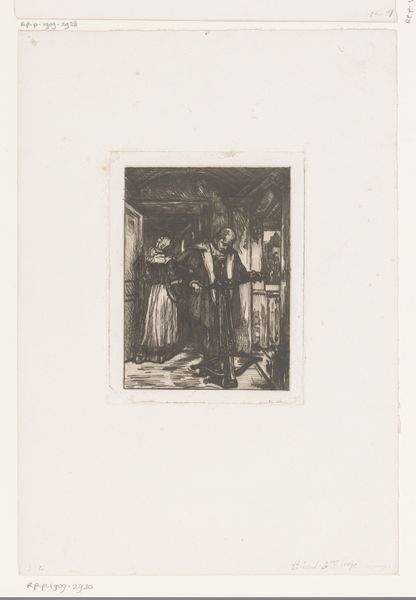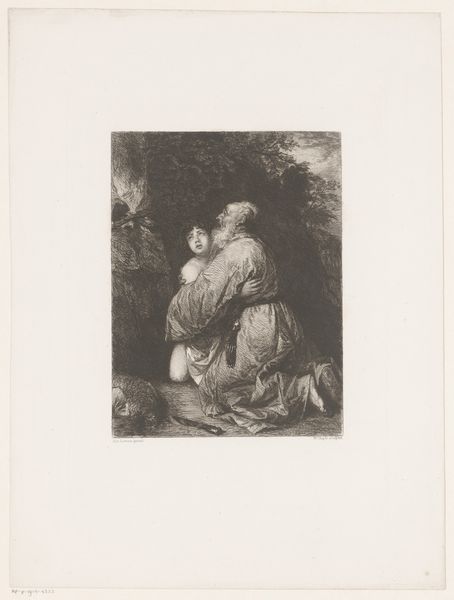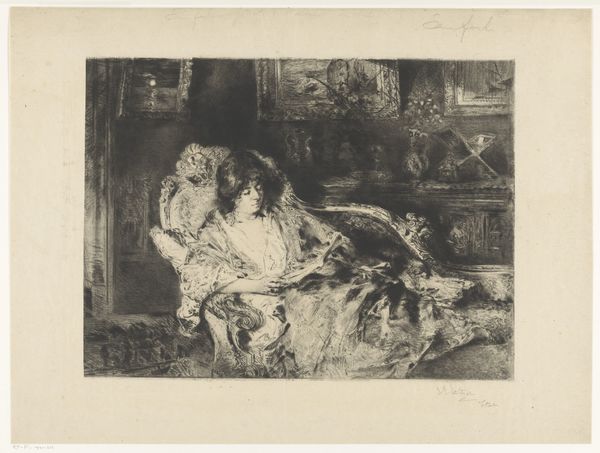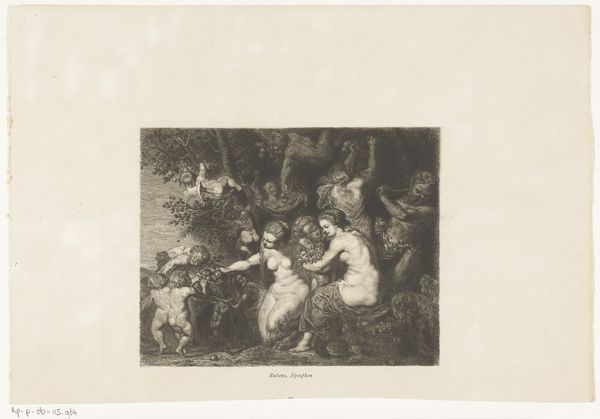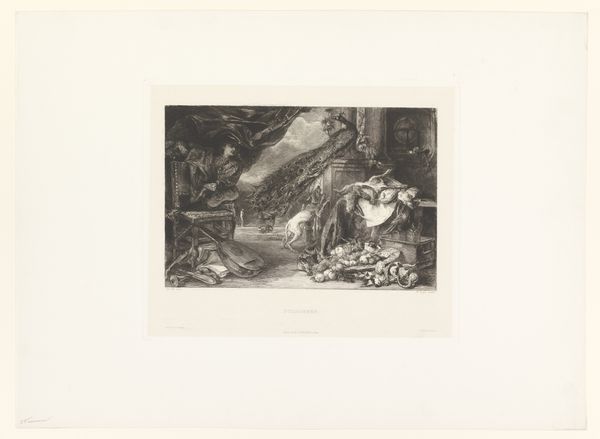
Dimensions: height 255 mm, width 275 mm
Copyright: Rijks Museum: Open Domain
Charles Théodore Bernier created this image of Bacchantes, a satyr, and a woman with grapes, using etching techniques. Note the central figure of the satyr, crowned with vine leaves. This motif harkens back to ancient Greece, where such wreaths symbolized Dionysus, the god of wine, fertility, and ecstatic release. The vine, heavy with grapes, has always been an emblem of transformation, of the intoxicating abandonment of self. We see echoes of this in Renaissance paintings where Bacchus is often depicted with a similar crown, reveling in the pleasures of the senses. Consider how the motif of the vine has been passed down through history, shifting in meaning, resurfacing in Victorian art as a symbol of forbidden indulgence. It touches on something primal within us, doesn't it? A collective memory of ecstatic rituals and the allure of the irrational, tapping into our subconscious desires and fears, an image of the wild and untamed aspects of human nature. The symbol has a non-linear, cyclical progression, constantly resurfacing, evolving, and taking on new meanings.
Comments
No comments
Be the first to comment and join the conversation on the ultimate creative platform.
